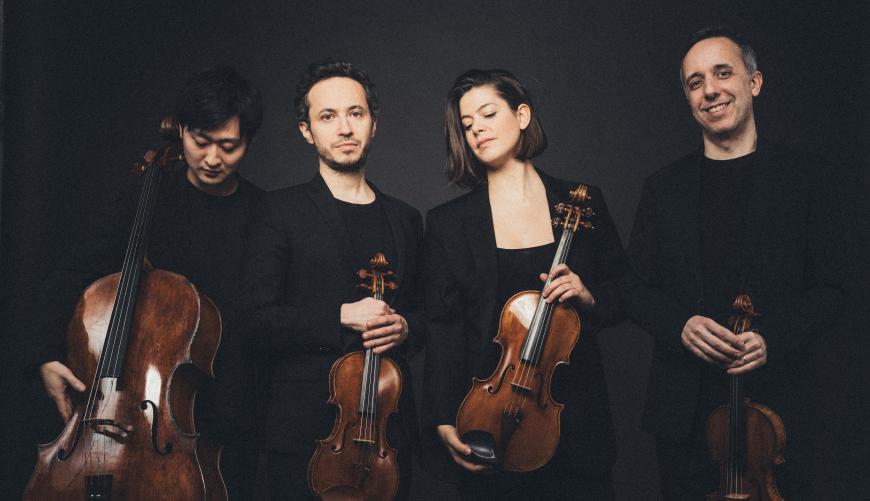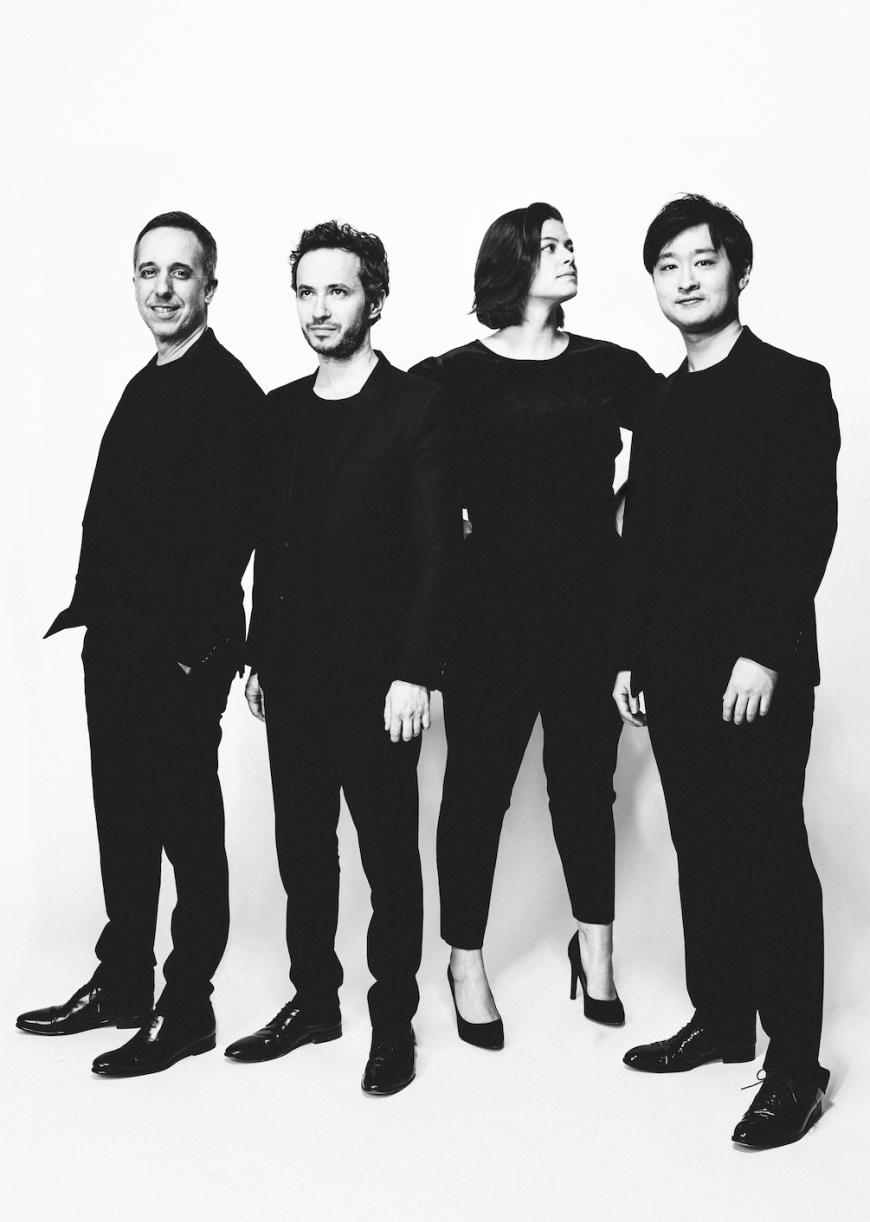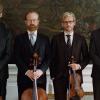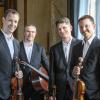
An ideal partnership isn’t 50-50, they say, but 100-100. How about with four people, each giving his or her all? That’s the Quatuor Ébène. Debuting at Cal Performances, these musicians — phenomenal as individuals, together even more so — brought Mozart’s String Quartet No. 21 in D Major, K. 575, to new heights.
Not that the score needs help. It’s a 25-minute distillation of Mozart’s greatness — and so sunny you’d never know how much the composer was suffering. In desperate need of money, he’d thought of the king of Prussia, a cellist who would have played many of the best bits of this quartet had the commission panned out. It didn’t, but last Tuesday’s performance did, not least in the minuet, the most conventional of classical forms, which here felt utterly fresh thanks to vivacious articulation and rhythm.
In fact, the lilt comes undone for a moment, but you might not have noticed. Ironically, the sounds joined so well in Berkeley’s First Congregational Church — the viola and cello on occasion actually sounding like violins — you could hardly hear the fragments passing hands. “Where were the lower voices?” my companion wondered, worried for a moment that something was wrong with his hearing. Where were the individual instruments at all? Mozart’s composition came across less as a quartet than as music. That was equally true of the Robert Schumann encore, the Ébène’s own arrangement — was it ever for piano? — of a movement from Bunte Blätter (Colorful leaves).

It was a glorious blend, but even if you didn’t think so, you only had to wait for Alfred Schnittke’s String Quartet No. 3. Each musician in the group — violinists Pierre Colombet and Gabriel Le Magadure, violist Marie Chilemme, and newly appointed cellist Yuya Okamoto — brought a distinct sense of urgency to this 1983 work.
It’s music of indebtedness. Cadential gestures of the Renaissance dog every passage, as does a spiky theme by Beethoven, and hearing the oozing symmetries you can’t help but think of Béla Bartók. And yet, Schnittke’s score isn’t stuck in the past — at least not when it’s played sensibly. The Ébène was wise to parcel out the passion little by little so that the ruminations could land just once, in the apotheosis. Before then, Tuesday’s performance had another high point in the second movement Agitato, darkly passionate music that can’t help but waltz (like the music of Erwin Schulhoff). Played as murmurs, the movement’s stock scares (frenetic tremolo at the bridge, for example) were all the more haunting.
Supernatural musical gifts come at the cost of happiness in Edvard Grieg’s “Minstrel,” the song whose melody inspired the composer’s folksy String Quartet No. 1 in G Minor, Op. 27. But in this quartet, repetition feels less tormenting than torpid. Grieg wrote it on a summer holiday; it tries to be serious but instead charms.
With unshowy virtuosity, the Ébène players smoothed the edges of Grieg’s more slapdash joinings (the first movement’s pothole of a theme shift, to name one). The inner voices’ rhythmic fill glinted with light, and inventive vibrato and bowing schemes spiced up even the most drawn-out sequences. The umpteenth time around the saltarello, a note of the theme was stretched just so, and the accompaniment so seamlessly accommodated the change that you had to sharpen your ears to appreciate it.
This excellent performance was all the Ébène — but Grieg does have one genius moment, in the Intermezzo: a close-set canon, hard to play and even harder to parse from the outside. Of course, it sounded hardly difficult at all.




